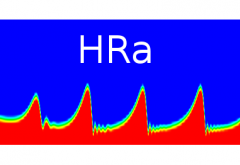How does a jazz musician comfort people? Right, he plays the blues! Last year’s autumn was full of bad news. So many friends or their relatives were in hospital. Some died. I wrote this blues. A blues is sad, by definition, but it always contains a grain of hope, otherwise we would not play it. I changed the chords a bit to make it cheerfuller. The I and the IV chords are major. The blue notes only appear on the offbeat. There is no tritone. The rhythm is inspired by the LJS 101 rhythm course. I have always wanted to record it on the saxophone, but could not make it. So here it is as a computer version from MuseScore. A Merry Christmas and a Happy New Year to all of you!
Blues_of_Hope_Eb Blues_of_Hope_C Blues_of_Hope_Bb
